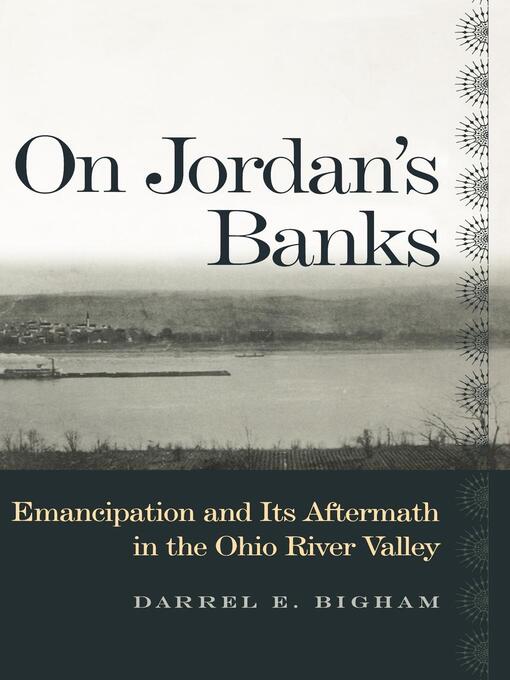The story of the Ohio River and its settlements are an integral part of American history, particularly during the country's westward expansion. The vibrant African American communities along the Ohio's banks, however, have rarely been studied in depth. Blacks have lived in the Ohio River Valley since the late eighteenth century, and since the river divided the free labor North and the slave labor South, black communities faced unique challenges.
In On Jordan's Banks, Darrel E. Bigham examines the lives of African Americans in the counties along the northern and southern banks of the Ohio River both before and in the years directly following the Civil War. Gleaning material from biographies and primary sources written as early as the 1860s, as well as public records, Bigham separates historical truth from the legends that grew up surrounding these communities.
The Ohio River may have separated freedom and slavery, but it was not a barrier to the racial prejudice in the region. Bigham compares early black communities on the northern shore with their southern counterparts, noting that many similarities existed despite the fact that the Roebling Suspension Bridge, constructed in 1866 at Cincinnati, was the first bridge to join the shores. Free blacks in the lower Midwest had difficulty finding employment and adequate housing. Education for their children was severely restricted if not completely forbidden, and blacks could neither vote nor testify against whites in court. Indiana and Illinois passed laws to prevent black migrants from settling within their borders, and blacks already living in those states were pressured to leave.
Despite these challenges, black river communities continued to thrive during slavery, after emancipation, and throughout the Jim Crow era. Families were established despite forced separations and the lack of legally recognized marriages. Blacks were subjected to intimidation and violence on both shores and were denied even the most basic state-supported services. As a result, communities were left to devise their own strategies for preventing homelessness, disease, and unemployment.
Bigham chronicles the lives of blacks in small river towns and urban centers alike and shows how family, community, and education were central to their development as free citizens. These local histories and life stories are an important part of understanding the evolution of race relations in a critical American region. On Jordan's Banks documents the developing patterns of employment, housing, education, and religious and cultural life that would later shape African American communities during the Jim Crow era and well into the twentieth century.

